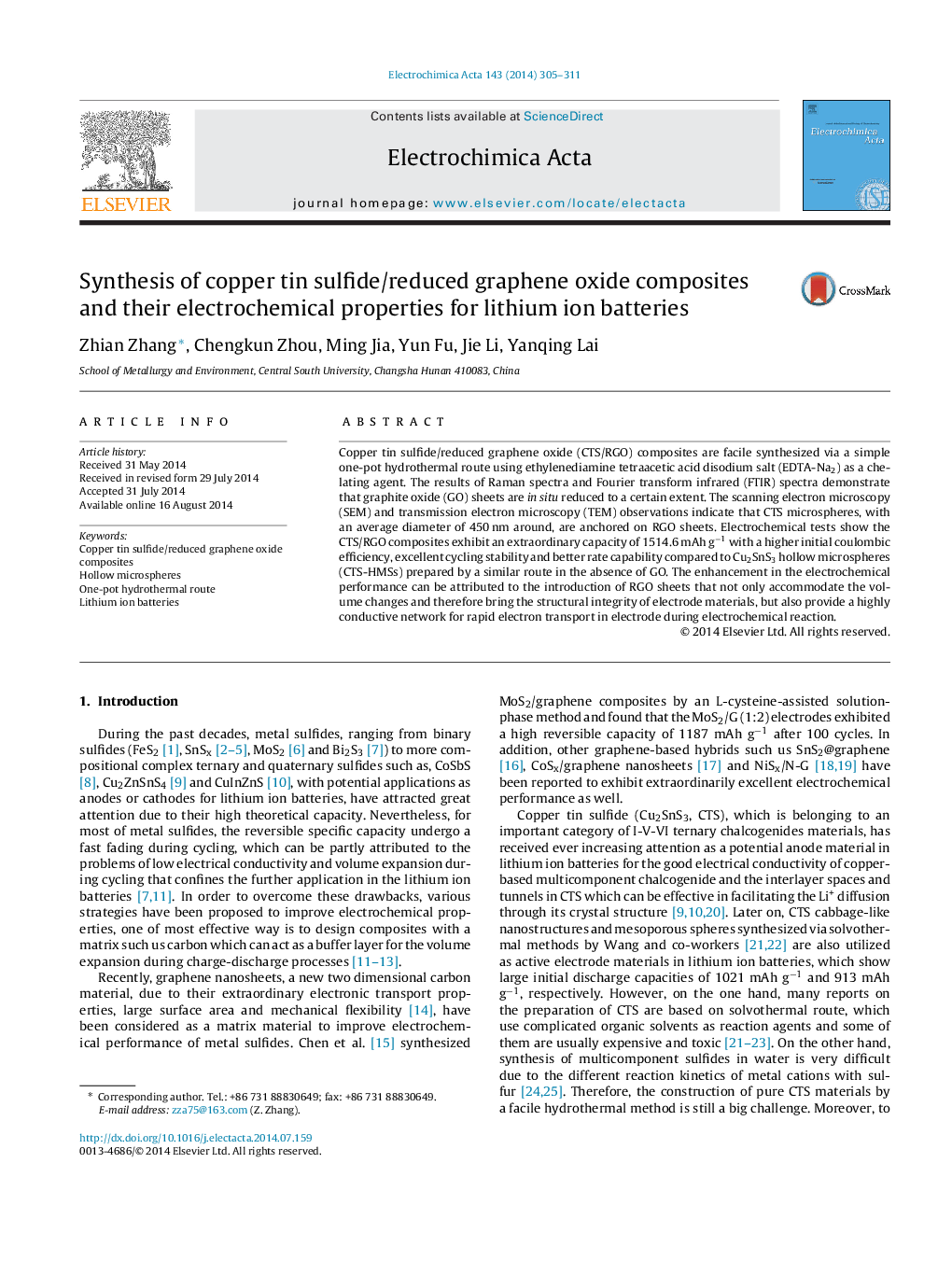| Article ID | Journal | Published Year | Pages | File Type |
|---|---|---|---|---|
| 185167 | Electrochimica Acta | 2014 | 7 Pages |
•CTS/RGO composites are in situ prepared by one-pot hydrothermal route.•EDTA-Na2 is used to adjust nucleation and growth of CTS on RGO sheets.•The CTS microspheres are highly dispersed on or wrapped by the RGO sheets.•CTS/RGO exhibits excellent cycling stability and high rate capability.
Copper tin sulfide/reduced graphene oxide (CTS/RGO) composites are facile synthesized via a simple one-pot hydrothermal route using ethylenediamine tetraacetic acid disodium salt (EDTA-Na2) as a chelating agent. The results of Raman spectra and Fourier transform infrared (FTIR) spectra demonstrate that graphite oxide (GO) sheets are in situ reduced to a certain extent. The scanning electron microscopy (SEM) and transmission electron microscopy (TEM) observations indicate that CTS microspheres, with an average diameter of 450 nm around, are anchored on RGO sheets. Electrochemical tests show the CTS/RGO composites exhibit an extraordinary capacity of 1514.6 mAh g−1 with a higher initial coulombic efficiency, excellent cycling stability and better rate capability compared to Cu2SnS3 hollow microspheres (CTS-HMSs) prepared by a similar route in the absence of GO. The enhancement in the electrochemical performance can be attributed to the introduction of RGO sheets that not only accommodate the volume changes and therefore bring the structural integrity of electrode materials, but also provide a highly conductive network for rapid electron transport in electrode during electrochemical reaction.
Graphical abstractThe Copper tin sulfide/reduced graphene oxide (CTS/RGO) composites are synthesized by a one-pot hydrothermal route and exhibit an extraordinary capacity of 1514.6 mAh g-1 with excellent cycling stability and high rate capability as electrode materials of lithium ion batteries. The enhancement in the electrochemical performance can be attributed to the introduction of RGO sheets that not only accommodate the volume changes and therefore bring the structural integrity of electrode, but also provide a highly conductive network for rapid electron transport in electrode during electrochemical reaction.Figure optionsDownload full-size imageDownload as PowerPoint slide
